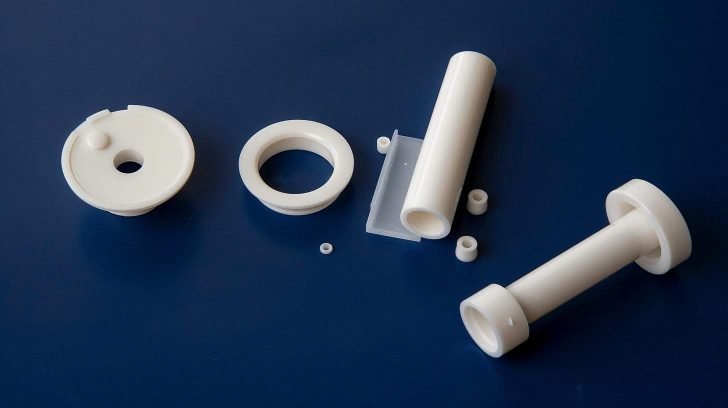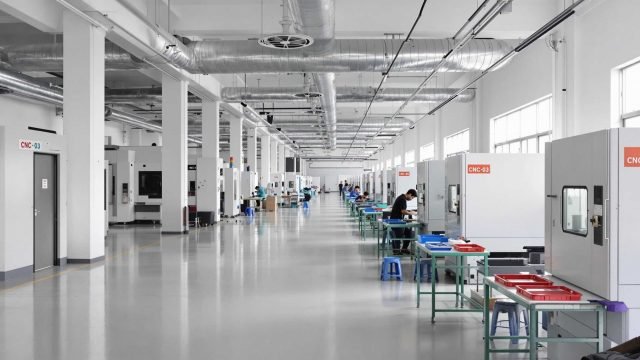Technical ceramics, also referred to as engineering ceramics or advanced ceramics, are a specialized category of ceramic materials designed for high-performance applications across various industries. Distinguished by their superior mechanical, thermal, and electrical properties, these materials are engineered to withstand extreme conditions, making them essential in sectors such as aerospace, automotive, electronics, and medical technology. The significance of technical ceramics lies in their ability to outperform traditional materials, thereby driving innovations in product design and manufacturing processes.
Table of Contents
The origins of ceramics date back over 24,000 years, evolving from primitive pottery into advanced materials that are integral to modern technology. The late 19th century marked a turning point with industrial advancements leading to the use of ceramics in electrical insulation, paving the way for their application in rapidly developing technologies like automobiles and electronics. Today, technical ceramics are further categorized into types such as oxide, non-oxide, silicate, and carbide ceramics, each with distinct properties tailored for specific applications. Notably, technical ceramics are used in critical applications that demand high strength, thermal stability, and electrical insulation, such as cutting tools, aerospace components, and semiconductor manufacturing. However, the field also faces challenges, including the brittleness of ceramics, high production costs, and complexities in shaping and handling. Ongoing research and technological advancements continue to enhance their properties and broaden their applications, highlighting their growing relevance in the context of sustainability and efficiency in industrial processes. As industries seek innovative materials to meet the demands of modern engineering challenges, technical ceramics are positioned at the forefront of material science, promising significant contributions to future technologies and applications.
History
Early Origins
The history of ceramics can be traced back over 24,000 years, with some of the earliest known ceramic figures created from malleable clay and hardened by fire during prehistoric times. As communities became more settled around 10,000 years ago, the production of tiles began in regions like Mesopotamia and India. Subsequently, around 7,000 to 8,000 years ago, the first functional vessels were developed in Central Europe.
Japanese Ceramics
Japan boasts one of the longest continuous histories of pottery manufacture, beginning with the Jōmon period approximately 16,000 years ago. Initially, pottery was produced as a means to solidify clay for practical use, evolving into an art form that met the community’s needs through the creation of functional utensils adorned with intricate designs. The evolution of Japanese pottery included the influence of various regions, leading to the establishment of the Six Ancient Kilns of Japan: Seto, Echizen, Tokoname, Shigaraki, Tanba, and Bizen. These regions played pivotal roles in innovating pottery techniques and styles, shaping the cultural landscape of Japanese ceramics.
The Mingei Movement
During the early Shōwa period, a folk art movement known as mingei emerged, founded by Yanagi Sōetsu. This movement sought to preserve the traditional pottery styles that were at risk of disappearing amid rapid urbanization in Japan. Influential potters such as Shōji Hamada and Kawai Kanjirō became notable figures in this movement, emphasizing the beauty and craftsmanship of everyday items used by common people.
Industrial Advancements
Significant developments in ceramic materials occurred in the late 19th century, particularly with the introduction of ceramic materials for electrical insulation, which became essential with the rise of new technologies like automobiles and electronics. The introduction of coke in the smelting process also revolutionized ceramic production, enabling the development of advanced materials like silicon carbide ceramics and later silicon nitride ceramics during the industrial era.
Contemporary Innovations
Today, the field of ceramics continues to evolve with advances in technology and scientific research, resulting in improved manufacturing processes, material properties, and applications.
The establishment of divisions focusing on bioceramics and other specialized applications highlights the dynamic nature of this field and its relevance to modern industry.
Japanese pottery remains a vital aspect of the nation’s cultural heritage, blending historical techniques with contemporary practices to adapt to changing societal needs and tastes, ensuring its survival and continued appreciation in the modern world.


Types of Technical Ceramics
Technical ceramics, also known as engineering ceramics or advanced ceramics, encompass a wide variety of materials designed for high-performance applications across different industries. These ceramics are characterized by their enhanced mechanical, thermal, and electrical properties, making them suitable for demanding environments.
Classification of Technical Ceramics
Technical ceramics can be categorized into several types based on their composition and intended applications:
Silicate Ceramics
Silicate ceramics, often referred to as technical porcelain, are made from silicate minerals and are commonly utilized in various technical applications due to their balance of mechanical and thermal properties.
Oxide Ceramics
Oxide ceramics, including aluminum oxide (alumina) and zirconium oxide (zirconia), are widely used for their excellent mechanical strength and thermal stability. Alumina is noted for its hardness and wear resistance, making it suitable for cutting tools and electrical insulators. Zirconia, particularly in its yttria-stabilized form, offers high toughness and thermal shock resistance, which makes it ideal for applications in dental ceramics and aerospace components
Non-Oxide Ceramics
Non-oxide ceramics include materials such as silicon nitride and boron carbide. Silicon nitride is renowned for its superior strength and thermal stability, making it valuable in high-stress applications, including automotive and aerospace components. Boron carbide, on the other hand, is recognized for its hardness and is often used in armor and abrasive applications
Carbide Ceramics
Carbide ceramics, such as silicon carbide, are utilized for their exceptional hardness and wear resistance, making them ideal for cutting tools and wear components in industrial settings.
Nitride Ceramics
Nitride ceramics, including silicon nitride, are favored for their high strength, toughness, and thermal stability, particularly in applications that require resistance to high temperatures and mechanical stress.

Properties and Applications
Technical ceramics exhibit a range of advantageous properties such as high hardness, thermal stability, wear resistance, and electrical insulation.
- Cutting Tools: Ceramics like alumina and zirconia are integral in manufacturing cutting tools due to their hardness and wear resistance, which are essential for machining operations.
- Aerospace Components: The lightweight and heat-resistant nature of technical ceramics makes them suitable for aerospace components, including turbine blades and heat shields.
- Semiconductor Processing: Ceramics such as alumina and silicon carbide are utilized in semiconductor manufacturing for components that require electrical insulation and thermal stability.
- Military and Harsh Environment Applications: Sapphire, a type of aluminum oxide, is employed in optical applications where durability and resistance to harsh conditions are crucial.
Properties
Technical ceramics possess a range of unique properties that differentiate them from traditional ceramics and make them suitable for various high-performance applications. These properties include high thermal stability, exceptional hardness, and superior dielectric strength, among others.
Mechanical Properties
High Hardness and Rigidity
One of the defining characteristics of technical ceramics is their extreme hardness, often exceeding that of all metals and naturally occurring materials, except for diamond. This high hardness translates into excellent wear resistance, allowing ceramic components to maintain their precise finishes much longer than metals. Furthermore, technical ceramics exhibit high rigidity, providing stable dimensional performance that is crucial in applications requiring precision.
Fracture Toughness
While technical ceramics are known for their hardness, they can be sensitive to small defects such as tiny pores, which can lead to brittleness. However, advancements in engineering have allowed the development of ceramics with improved fracture toughness, enabling them to resist fracture under severe mechanical service environments. This is important in applications where durability and resistance to wear are critical.
Low Density and High Compressive Strength
Technical ceramics are significantly lighter than high-strength metals, typically weighing about half as much for comparable parts. This lightweight characteristic benefits applications in transportation and aerospace, where reduced mass can enhance performance and fuel efficiency. In terms of compressive strength, many technical ceramics can withstand loads ranging from 1000 to 4000 MPa, making them suitable for applications that require materials capable of bearing heavy loads.
Thermal and Electrical Properties
High Thermal Stability
Technical ceramics are known for their ability to maintain performance across a wide temperature range, thanks to their high thermal stability. They can withstand extreme temperatures without deforming, making them ideal for high-temperature applications such as laser optics.
Low Coefficient of Thermal Expansion
These materials also exhibit a low coefficient of thermal expansion, which contributes to their resistance to thermal shock. This property allows them to perform reliably under fluctuating thermal conditions.
High Dielectric Strength
Another notable property of technical ceramics is their high dielectric strength, which enables them to endure high voltages for extended periods without breaking down. This characteristic makes them suitable for electrical applications such as capacitors and insulators[
Application-Specific Properties
Technical ceramics can be engineered to meet specific mechanical or physical property demands tailored for various applications. For instance, their superior wear resistance makes them ideal for components used in harsh environments, such as oil and gas drilling. The combination of their mechanical properties allows technical ceramics to outperform both metals and polymers in demanding industrial applications.
Manufacturing Processes
Technical ceramics are produced through a series of precise and controlled manufacturing processes that convert raw materials into high-performance ceramic products. The general manufacturing process consists of several key steps, including powder preparation, shaping, green machining, and sintering.

Shaping Techniques
Once the powder is prepared, it is shaped into the desired forms using various techniques, including pressing, injection molding, extrusion, and slip casting.
Pressing
Pressing methods can be either uniaxial, applying pressure from one direction, or isostatic, which applies pressure uniformly from all sides. This process is suitable for both simple and complex geometries, making it a common choice for mass production.
Injection Molding and Casting
In injection molding, a ceramic mixture is injected into molds, while slip casting involves pouring a ceramic slip into absorbent plaster molds to create the desired shapes. These methods allow for the production of prototypes, parts with intricate geometries, and both thin-walled and solid objects.
Powder Preparation
The first step in manufacturing technical ceramics is the selection and preparation of the raw materials. Common materials include alumina, zirconia, silicon carbide, and silicon nitride, chosen based on their mechanical properties, thermal stability, and insulation capabilities.
Milling
The selected materials undergo milling, a process that reduces the particle size through mechanical means, such as attrition, compression, and impact. Attrition involves particle-to-particle collisions that break down agglomerates, while compression applies force to fracture the materials. Various milling equipment, such as jaw crushers and ball mills, is employed to achieve the desired particle size.
Sizing and Batching
Following milling, the materials are sized to separate usable material from non-usable. The batching process, also known as blending, calculates and weighs the correct amounts of the raw materials for the next stage.
Mixing
In the mixing stage, raw materials are combined to create a homogeneous mixture. This is typically done using pug mills for dry mixes or filter presses for wet slurries. Additives such as binders or plasticizers may be included to enhance the material properties
Green Machining
After shaping, the formed material is referred to as the “green body.” Green machining allows for further processing of the unsintered mass, which is more economical than machining after sintering. Care must be taken during this stage to avoid density gradients, as these can lead to distortions during the sintering process.
Sintering
The final stage in the manufacturing process is sintering, where the green bodies are heated to high temperatures to achieve densification and develop the desired mechanical properties. This process transforms the ceramic into a solid, durable product that meets specific application requirements. Through this systematic approach, manufacturers can optimize their production methods, control quality, and tailor the properties of technical ceramics to meet diverse industrial applications.
Applications
Technical ceramics are increasingly utilized across various industries due to their unique properties, which include high strength, resistance to wear, and biocompatibility. This versatility allows them to play pivotal roles in sectors such as medical technology, automotive, aerospace, and industrial applications.


Medical Technology
Technical ceramics are extensively employed in the medical field, particularly in the production of surgical implants for orthopedics, dentistry, and veterinary medicine. Their biocompatibility makes them suitable for long-term implantable devices, such as prosthetic joints and heart valves, as they do not provoke an immunological reaction or corrode in the human body. The use of ceramics in medical equipment is further enhanced by their ability to be disinfected without compromising quality, making them ideal for reusable instruments. As research progresses, new manufacturing technologies, including additive manufacturing, are being explored to develop more complex and high-quality ceramic medical implants.
Automotive & E-Mobility
In the automotive sector, technical ceramics are utilized in applications ranging from electronics to structural components. They are integral to the development of electric and hybrid vehicles, as advanced ceramics are essential for battery components and other avionics systems. The rising demand for lightweight and fuel-efficient vehicles drives the need for innovative ceramic materials, such as ceramic matrix composites, that can withstand high temperatures and stresses. Recent surveys indicate that automotive design engineers regard advanced ceramics as vital for future applications in vehicle manufacturing.
Aerospace Industry
The aerospace sector is one of the most significant consumers of technical ceramics, particularly due to their exceptional heat resistance and durability. Technical ceramics are used in engine components like combustion chambers and turbine blades, where they must endure extreme conditions. The increasing demand for electric aircraft is expected to further enhance the application of advanced ceramics, as they are critical for components such as lightweight battery housings and thermal protection systems for spacecraft. Research is ongoing into new ceramic materials that can improve performance and reduce emissions in aviation technology.
Industrial Applications
Beyond medical and aerospace applications, technical ceramics are essential in various industrial processes. They contribute to the safe operation of machinery and equipment, facilitating the control of processes and the reduction of emissions. Technical ceramics are employed in the manufacturing of components such as circuit carriers and protective elements used in electronics and communication technologies. Their ability to perform reliably in demanding environments makes them a valuable resource in advancing industrial efficiency and sustainability.
Advantages and Disadvantages
Technical ceramics, also known as engineered ceramics or industrial ceramics, offer a range of benefits and drawbacks that are important to consider in various applications.
Advantages
- High Strength and Hardness: Technical ceramics exhibit superior strength and hardness compared to metals when evaluated at the same density and cost. This makes them ideal for applications requiring robust materials under stress.
- Thermal Resistance: These materials can withstand extremely high temperatures, making them suitable for use in high-temperature industrial processes, such as those in the metallurgical and glass production industries. Their durability ensures longevity even in harsh conditions.
- Electrical Insulation: Technical ceramics possess high dielectric strength, allowing them to manage high voltages without breakdown. This property is crucial for their application in electrical components such as insulators and capacitors.
- Chemical Resistance: The non-corrosive properties of technical ceramics enable them to resist degradation in aggressive environments, thus enhancing their longevity and reliability in industrial applications.
- Low Thermal Expansion: Ceramics generally have low thermal expansion coefficients, which helps maintain dimensional stability when subjected to temperature variations.
- Ease of Automation: Manufacturing processes such as dry pressing and extrusion are conducive to automation, resulting in high efficiency and lower labor costs during production.
Disadvantages
- Brittleness: One of the primary drawbacks of technical ceramics is their brittleness. While they are strong, they are also prone to fracture under tensile stress, making careful handling essential during manufacturing and application.
- High Production Costs: The cost of producing technical ceramics can be significant due to the complex shaping processes and the quality of raw materials required. This can limit their use in cost-sensitive applications.
- Challenges in Shaping: The molding and shaping of ceramics can be complicated. Techniques like isostatic pressing, while effective, require precise control of pressure to avoid defects such as cracking or delamination during the forming process.
- Limited Size and Purity: The processes used for shaping ceramics may not be suitable for large components, and achieving high purity in ceramic products can be challenging. This can restrict their use in high-end technology applications where material purity is critical.
- Energy Consumption: Processes such as dewaxing in certain manufacturing techniques can lead to increased energy consumption and longer production times, which can detract from overall efficiency.
Ready to Transform Your Engineering Solutions?
No industrial challenge is too complex for Eshino. From precision ceramic rods and advanced bushings to customized nozzles and other high-performance components, we engineer solutions that combine exceptional durability, thermal resistance, and precision to meet your specific needs. Whatever your industry demands, Eshino delivers tailored expertise you can trust.

